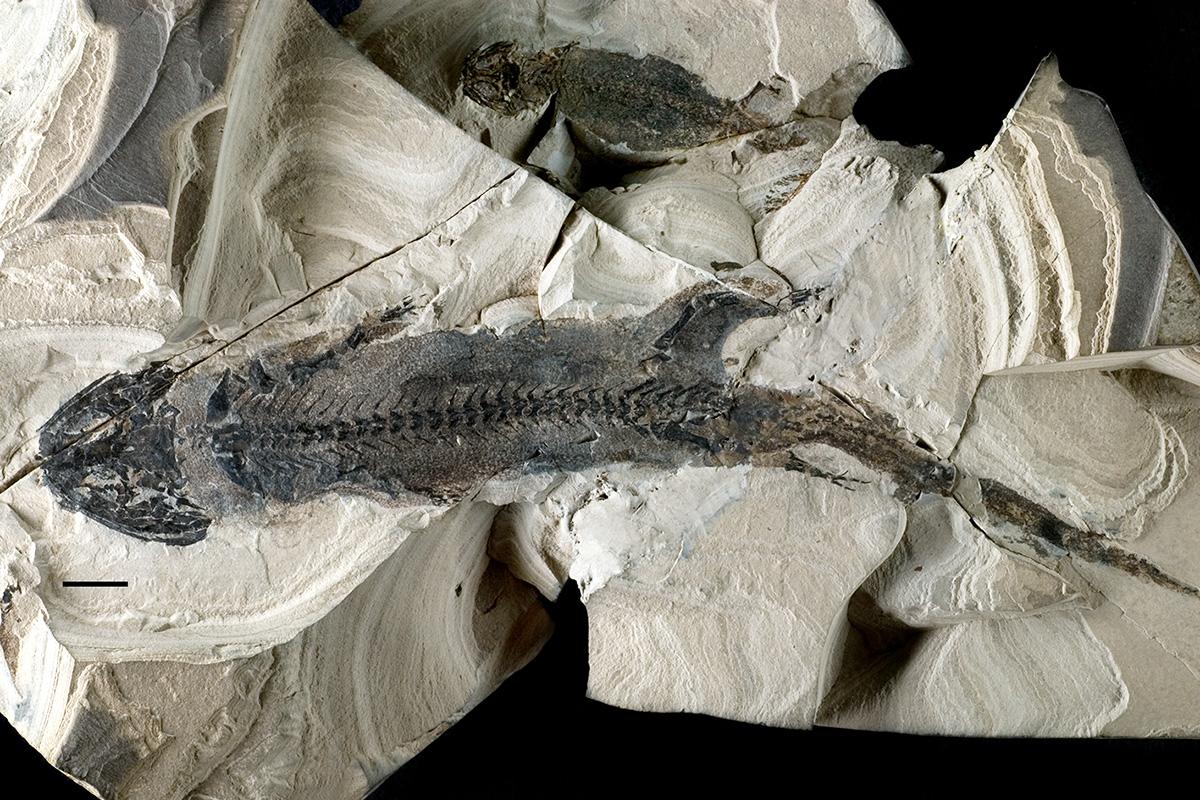Topic and objectives
My research field encompasses the physiology and mode of life of early tetrapods (stem-tetrapods, early amphibians and stem-amniotes) of the Palaeozoic and Mesozoic. The main topics are (1) dermal scales and bones as osteological correlates of the integumentary structure and their physiological role, and (2) the hyobranchial apparatus and the reconstruction of hyobranchial and cranial muscles, and the implications for breathing and feeding. Apart from this, I am working on physiological aspects like heat balance, osmoregulation, and digestion in early amphibians based on osteological correlates of physiologically relevant soft-tissues and by physiological estimations analogous to extant vertebrates.
Methodology
Microstructure and histology of dermal bones (skull roof, pectoral girdle, osteoderms, scales) are investigated by classical thin sections and non-invasive methods like micro-CT and neutron tomography. The often sculptured (ornamented) surface of dermal bones is investigated by light microscopy and SEM and analysed with quantitative methods. The hyobranchium of early tetrapods is investigated morphologically, microscopically and by micro-CT. Reconstructions of soft parts like blood vessels and the gills proper as well as hyobranchial and cranial muscles are based on the recognition of osteological correlates in fossils, dissection of extant amphibians and fishes, and by applying the Extant Phylogenetic Bracket. Finite Element Analysis is applied to investigate stress distribution in the early tetrapod skull and palate.
photo above: Articulated specimens of two Early Permian temnospondyl amphibians, Micromelerpeton credneri (left) and Apateon pedestris (right). Micromelerpeton shows soft-part preservation of its bushy external gills. Scale bar: 10 mm.
Selected publications
- Witzmann, F. & Werneburg, I. 2017. The palatal interpterygoid vacuities of temnospondyls, and the implications for the associated eye- and jaw musculature. Anatomical Record 300: 1240-1269
- Witzmann, F. & Brainerd, E. L. 2017. Modeling the physiology of the aquatic temnospondyl Archegosaurus decheni from the early Permian of Germany. Fossil Record 20: 105-127.
- Lautenschlager, S., Witzmann, F. & Werneburg, I. 2016. Palate anatomy and morphofunctional aspects of interpterygoid vacuities in temnospondyl cranial evolution. The Science of Nature (Naturwissenschaften) 103: 79 DOI 10.1007/s00114-016-1402-z
- Witzmann, F. 2016. CO2-metabolism in early tetrapods revisited: inferences from osteological correlates of gills, skin and lung ventilation in the fossil record. Lethaia 49: 492-506.
- Witzmann, F. 2013. Phylogenetic patterns of character evolution in the hyobranchial apparatus of early tetrapods. Earth and Environmental Science Transactions of the Royal Society of Edinburgh 104: 145-167.
- Witzmann, F. & Schoch, R. R. 2013. Reconstruction of cranial and hyobranchial muscles in the Triassic temnospondyl Gerrothorax provides evidence for akinetic suction feeding. Journal of Morphology 274: 525-542.
- Janis, C. M., Devlin, K., Warren, D. E. & Witzmann, F. 2012. Dermal bone in early tetrapods: a palaeophysiological hypothesis of adaptation for terrestrial acidosis. Proceedings of the Royal Society of London, Series B 279: 3035-3040.
- Witzmann, F. 2011. Morphological and histological changes of dermal scales during the fish-to-tetrapod transition. Acta Zoologica (Stockholm) 92: 281-302.
- Schoch, R. R. & Witzmann, F. 2011. Bystrow's Paradox: gills, fossils, and the fish-to-tetrapod transition. Acta Zoologica (Stockholm) 92: 251-265.
- Witzmann, F., Scholz, H., Müller, J. & Kardjilov, N. 2010. Sculpture and vascularization of dermal bones, and the implications for the physiology of basal tetrapods. Zoological Journal of the Linnean Society 160: 302-340.
- Witzmann, F., Soler-Gijón, R. 2010. The bone histology of osteoderms in temnospondyl amphibians and in the chroniosuchian Bystrowiella. Acta Zoologica (Stockholm) 91: 96-114.
- Witzmann, F. 2009. Comparative histology of sculptured dermal bones in basal tetrapods, and the implications for the soft tissue dermis. Palaeodiversity 2: 233-270.
- Witzmann, F. 2007. The evolution of the scalation pattern in temnospondyl amphibians. Zoological Journal of the Linnean Society London, 150: 815-834.
External funding
This is a permanent research field, but parts of it were funded by the DFG (projects “Sculptured dermal bones as osteological correlates of integumentary structure and physiology of basal tetrapods” in 2006-2007, and “Morphological and phylogenetic changes of the hyobranchial apparatus from fishes to nasal tetrapods” in 2011-2012; PI Florian Witzmann) and by the Alexander von Humboldt Foundation (Feodor Lynen fellowship in Providence, USA: “Breathing in early tetrapods: palate construction and the evolution of buccal pumping” in 2014-2016; PI Florian Witzmann).
